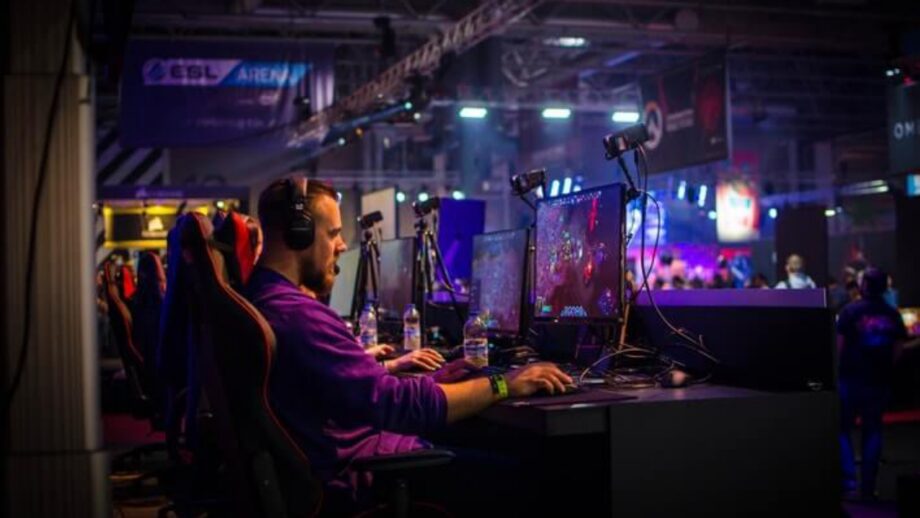When you pull out your video game console to play NBA2K, the most critical decision you’ll have to make is the player or team you want to be. But have you ever considered working on a game like NBA2K as a designer?
With a market worth of $336 billion, video gaming is bigger than television, movies, and music combined. Because the industry is continuously growing, there are numerous opportunities to work in it. The video game industry employs a wide spectrum of professionals, from game designers and software engineers to graphic artists and electrical engineers who create gaming consoles.
These jobs might pay anywhere from $55,000 to $100,000 per year or more. Breaking into the video game industry, like breaking into the NBA, is challenging.
I know firsthand what it takes to land a job in the video game industry as the former head of graphics for a large video game company and as the director of Texas A&M University’s Learning Interactive Visualization Experience – or LIVE Lab. Here are five suggestions for doing so.
1. Design your own games
It helps to give the games you’ve created or changed when applying for a job or even an internship at a video game firm.
Game engines, which are the basic technology for games, are fortunately free and allow you to design your own game.
You might want to look into Unreal and Unity.
You may also make video game assets like buildings, characters, vehicles, and animations with free software like Houdini and Blender.
If creating a game from the ground up seems too onerous, you may always “mod” (short for “change”) an existing game like Portal 2, Civilization, or Minecraft. This is an ideal place to start learning the fundamentals of game design and asset development.
2. Participate in game jams
A game jam is an event in which participants have a specific amount of time to create a new video game. Game jams are a wonderful way to meet new people, work on a project together, and just learn how to build games. Many jams attract representatives from video game developers. These company officials serve as mentors, judges, and coaches. They can advise you on how to get started in the business. They may also be able to connect you with job opportunities.
Game jams are typically short, lasting only a day or two, but some might run-up to a week. A game jam can be entered by one individual or a small group. Some game jams, such as the Games for Change Student Challenge, focus on specific subjects such as health, conservation, or science and deliver resources for teachers and students to participate. Other game jams, such as the Global Game Jam, are available to everyone, including professionals. Some game jams, like Chillennium, are in-person, allowing you to meet other game designers, artists, developers, industry mentors, and game firms face to face.
3. Attend game conventions
The annual Game Developers Conference in San Francisco, which has traditionally attracted over 29,000 attendees, is one of the biggest conferences in the United States. The annual Gamescom convention in Cologne, Germany, attracted over 370,000 people. Several PAX conferences are held throughout the year in various locations across the United States. PAX began as the Penny Arcade Expo and has since grown into a comprehensive conference and exhibition. These conferences allow guests to learn about new games, network with industry professionals, play games, and attend seminars and workshops on themes relating to game design and development.
A conference like PAX East also allows indie creators to show off their work and receive comments from the general public.
4. Take classes in game design
Game design classes are now open in many high schools, community institutions, and universities.
In addition to these studies, it is beneficial to take math, physics, art, and technology classes beginning in high school if possible. All of these fields benefit almost every employee in the video game industry. A good foundation in arithmetic and statistics is required of a game designer attempting to construct a balanced game. To balance a game, the designer must employ math and statistics to ensure that no single game aspect – such as a character or strategy – dominates the others.
Even if you don’t think you’ll use math or art in your job, having a basic understanding of both and the ability to converse about them with coworkers goes a long way.
5. Play away
You must be well-versed in the games that are presently being played and have been victorious in the past in order to build amazing games. This implies that you should play games that you would not ordinarily play, as well as those that you dislike. Not everyone enjoys all games. There are many various types of games, ranging from amusement to educational, health and science games, and so on. Being able to analyze games critically and determine which components work well, which elements may be improved, and which elements you could utilize in your own games can aid your development as a game designer.
With a little effort, breaking into the games industry is possible. It can also be extremely satisfying. Imagine if the game you helped build is teaching players new skills, or that it is assisting scientists in the discovery of new proteins, or that it is amusing games for hours.


